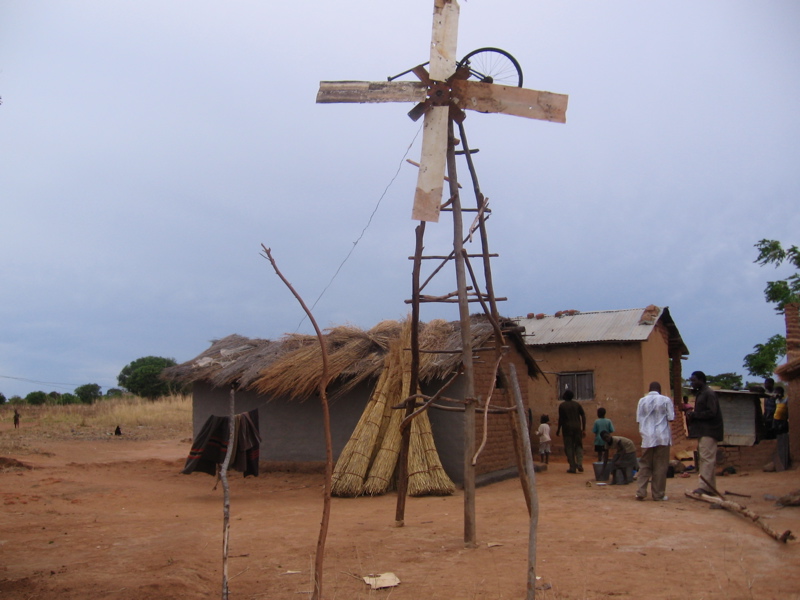The Boy Who Captured the Wind

The nation of Malawi is located in southern Africa, toward the east of the continent but landlocked, surrounded by other nations on all sides. It’s one of the smallest nations on the continent (by area) and one of the world’s poorest. The population — about 16 million — is mostly rural and the economy agricultural. Infrastructure is lacking and electricity can be hard to come by. Despite the fact that demand for power is dwarfed by Western norms, Malawi’s state-run power company — which provides 95% of the nation’s electricity — is marred by rolling blackouts.
So some Malawians have taken power into their own hands, and in at least one case, in an inspiring way.

That’s a picture of William Kamkwamba from 2007. He was just a few months before his 20th birthday, but his accomplishment predated that picture by nearly seven years. It all started when he was around age 13, when he was kicked out of school because his family could no longer afford his school fees — a grand total of $80. The young Kamkwamba, though, didn’t give up on his education. He became a regular at the library, where he came across a book about windmills, how they can provide power even in remote areas, and how they’re built.
A windmill sounded like something that his home could use — so he decided to make one. As CNN reported, “he scoured through junkyards for items, including bicycle parts, plastic pipes, tractor fans and car batteries. For the tower, he collected wood from blue-gum trees.” And in 2002 — when he was only 14 years old — Kamkwamba succeeded. Here’s a picture of his achievement, below. (Look closely, and you’ll see that the wheel at the top is pretty clearly from an old bicycle.)

And yes, it worked. In a 2007 TED talk, Kamkwamba told the audience that the windmill provided enough electricity to power “four lightbulbs and two radios” — a huge accomplishment, especially in the impoverished area in which Kamkwamba and his family lived.
Kamkwamba’s community took notice as did the press — it’s not every day a 14-year-old raids the garbage and uses the haul to bring light, literally, into his home. Per Wikipedia, “local farmers and journalists investigated the spinning device and Kamkwamba’s fame in international news skyrocketed.” Through philanthropic support, Kamkwamba was able to build four more windmills in his community, one of which, per the above-linked CNN article, is “at an area school that he used to teach classes on windmill-building.” And the windmills do more than provide power. Some pump water, acting as an irrigation system — a boon for an area often subject to drought.
For Kamkwamba, the story didn’t end there. Despite being a grammar school dropout, Kamkwamba’s successful engineering earned him admission and a scholarship to Dartmouth College. He graduated in 2014.
Bonus fact: In 2011, the Malawian government proposed a law titled “the 2011 Malawian Air Fouling Legislation.” The bill, per its text (via Wikipedia), made it a misdemeanor to “vitiate the atmosphere in any place so as to make it noxious to the public to the health of persons in general dwelling or carrying on business in the neighborhood or passing along a public way.” Basically, it was an anti-pollution bill — but not everyone saw it that way. Per the BBC, a justice minister took a very expansive view of how a person could “vitiate the atmosphere” with something “noxious,” and concluded that the law, as written, could criminalize public flatulence. This lead to widespread ridicule of the law in the media but, so far, no reports of arrests for such a crime.
From the Archives: The Curious Problem with MIT’s Tallest Building: The building where the wind blocked the way.
Related: “The Boy Who Harnessed the Wind: Creating Currents of Electricity and Hope” by William Kamkwamba. 4.5 stars on 280 reviews.
